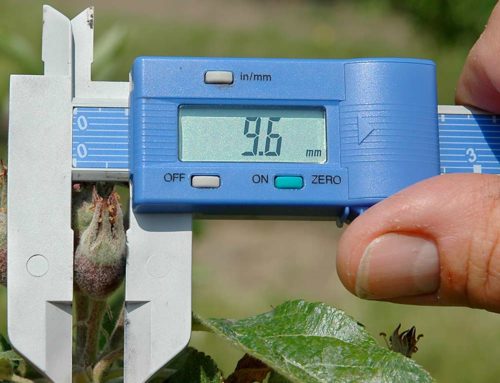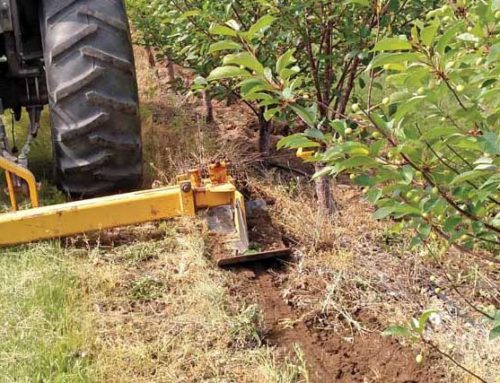Marketing is going to be a challenge for most of the coming decade as waves from the financial collapse and the Great Recession slowly dissipate into ripples. Producers of healthful products such as apples may fare okay, but they’re facing a new kind of customer and need to adapt. Imagine a shopper, smart phone in hand, scanning the bar code on a product and, through a wireless Internet connection, comparing prices for the product in all the stores in the area, and then using a coupon at checkout.
If it seems incongruous for a person with a $100 a month iPhone bill to be clipping 50-cents-off coupons, welcome to the future. Actually, it’s the present. Such a price-comparison application, or app, can be downloaded to iPhones and iPads now. It’s called hiogi. answers.everywhere.
You can also get coupons from sites on the Web. Several speakers during the U.S. Apple Association’s outlook and marketing conference in Chicago spoke about the new conditions apple growers and sellers are struggling to adapt to. “The Great Recession became the Great Equalizer,” according to Steve Lutz, from The Perishables Group, quoting an industry analyst. While rich people didn’t for the most part lose their jobs, as millions of poorer people did, they lost a great deal of wealth from the collapse in stocks and home values.
“Price is now a focal point for everybody,” Lutz said. “Price pressure has permeated at all stores, not just Wal-Mart. Even Wegman’s finds its customers seeking to avoid higher prices.” More customers are going to supercenters, farmers’ markets, and warehouse clubs, he said. People are buying fewer organic products and fewer convenience foods. While organic was once considered the gold standard, some of the glitter has gone in the last two years.
Consumers remain under pressure, he said. So they are seeking lower-price stores for produce, avoiding higher-priced foods, substituting among products in a category like fruit, and buying on sale. While unemployment among people making $150,000 a year or more is only 3 percent, they have chosen to increase their savings rate to restore some of their lost wealth.
Among middle-income people, unemployment is 9 percent, and among those with the lowest incomes, unemployment is 31 percent, he said. Some 7.2 million jobs have been lost in the last two years. The economy needs to create 100,000 jobs a month just to absorb new workers and stay even.
If the economy creates 2.5 million jobs a year, twice the pace of the years 2001-2007, still it will take seven years to get back to 5 percent unemployment by 2017, he said. This persistently high unemployment will continue to undermine asset values and foster a climate of gloomy conservatism.
Capturing a trend
Taking advantage of a trend is like capturing an elephant. It’s better to get out in front and dig a pit than to shoot it in the butt with arrows after it’s gone past. That’s the assessment of Phil Lempert. He’s known as “the supermarket guru” with a radio show and a Web site with that name. He explores consumer trends and offers food advice. He spoke to apple growers and marketers at the USApple conference.
Trends seem big and lumbering, like elephants, but they pass by, sometimes quickly. In Lempert’s view, organic has passed its prime, local will be over in the blink of an eye because it is not sustainable, and local is giving way to locale. Having a good product produced in its proper place will attract customers wanting healthful, tasty food—and, he said, “apples are in a perfect place to capture this elephant.” Lempert is optimistic that good things are set to happen with foods like apples, and that some leadership will come from Washington.
While the Obama administration will be criticized because new legislation will give the FDA and USDA broad new powers, Washington had to react to food-safety problems the produce industry was failing to solve, he said. On the positive side, he said, “there’s a new food face in Washington.” Michelle Obama is emerging as the new role model for healthy eating—despite getting a rough start with what Lempert calls “the organic garden disaster.”
The ground under the White House lawn, after 200 years in an urban setting, was toxic and not suited for organic certification, Lempert said. It wasn’t organic from the start, and the Obamas also came to realize they could not cater to the top 2 percent of consumers who can afford to eat organic food, he said. Young people are being educated about food through new media like smart phone and iPad applications that, besides offering service to shoppers, provide food video games. There are kid-oriented recipes on YouTube.
The aging Baby Boomers are looking closely at food as well. Consumers want more information about food, including recipes, Lempert said. “They are bored with their foods and looking for new things to buy. These days, catering to consumers is all about health, indulgence, ethnic anything, technology, and value.”
Consumers want lower prices, local foods, more variety, freshness, and excellent service, he said. Consumers are selfish—“it’s all about me”—they have zero tolerance for error, and want quality and service at a good price. Food shows are returning to substance. “Cute and cleavage is out,” he said. “Julia Child would be proud.
Selling apples
Lutz is optimistic about apples, but said marketers need to stay on their toes. While consumers want value, they’re not averse to paying more for something they really like. In the last quarter of 2009, Honeycrisp apples sold for an average $1.99 a pound while other apples averaged $1.34. “Apples have become one of the most complex categories in the produce department,” he said.
There are many more varieties now and many kinds of packages, all looking for shelf space. His advice to marketers: Have solid information as you enter the apple marketing season. Sales in the fourth quarter of the year are critical, and sales lost then are not recovered.
That lesson was learned two years ago when the crop size was underestimated and prices were too high early—just as the recession was hitting. The marketing plan has to be in place at harvest, and supplies of substitute fruits need to be considered. Price should be established early, and price consistency helps retailers so they can promote apples properly. Chain promotions drive sales, he said.






Leave A Comment